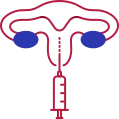Best Infertility Treatment in Surat

What is Infertility?
If you’re having trouble becoming pregnant because of infertility, there are fertility treatments that we can assist with. Fertility treatments comprise hormone and ovulation-supporting drugs, which are sometimes paired with minor surgical procedures.
We also provide Assisted Reproductive Technology (ART) that can assist you in conceiving a child. ART procedures include those that make it easier for sperm to fertilize an egg and add the egg’s implantation in the uterine lining.

Infertility Counselling
Infertility affects every element of your married life. For such medical issues, it is advisable to seek the advice of a fertility counselor when considering...

Semen Analysis
Candor IVF deals with male fertility and reproductive health in terms of any dysfunction and infertility issues in males.

DNA Fragmentation Test
The motility, concentration, and shape of your sperm are all determined by the quality and integrity of your sperm. DNA fragmentation test is a powerful...

Hormonal Investigation
Hormones are the chemical messengers in your body. These potent substances are produced in the endocrine glands and circulate through your bloodstream...

Hysterosalpingography (HSG)
Hysterosalpingography is the test for female infertility. It is an X-ray test that shows the internal structure of the uterus and whether the fallopian tubes are blocked.

Ovulation Induction
Ovulation occurs when an egg is discharged from one of the ovaries. This happens once a month in women who have regular menstrual cycles.

Intrauterine Insemination (IUI)
Intrauterine insemination (IUI) is a fertility treatment used in couples who are looking to conceive a child. IUI entails injecting sperm into a woman’s uterus to aid conception.

In Vitro Fertilization (IVF)
In-vitro Fertilization is a type of assisted reproductive technology (ART) that is frequently used to treat couples struggling with infertility.

Intracytoplasmic Sperm Injection (ICSI)
Intracytoplasmic Sperm Injection (ICSI) is a type of In Vitro Fertilisation (IVF) that is used to treat severe cases of male-factor infertility.

Surgical Sperm Retrieval
Surgical sperm retrieval is a procedure to get sperm for fertility purposes. A number of men have azoospermia conditions in which they are sterile and ...

